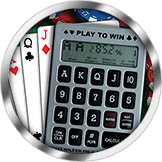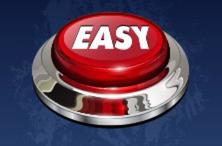Poker Maths - What You Need To Know

Forget all those boring school maths questions and enter the world of fun maths! In poker it’s maths that will help you to unlock the secrets of a perfect hand, perfectly played.
Every decision an online poker player makes should be based on probability, so that is what we’ll look at first. Working out poker probabilities is what will help you to know what the chances of your hand winning are.
After all, you don’t want to land up as the butt of one of the famous poker player Dutch Boyd’s jokes:
Probably, Definitely, Maybe…
Before we go into any more detail, you should make sure that you understand what the term probability means. Here’s a simple explanation for those who aren’t sure or poker players who just want a refresher:
“Probability…deals with the likelihood that one outcome or another will occur. For instance, a coin flip has two possible outcomes; heads or tails. The probability that a flipped coin will land heads is 50% (one outcome out of the two). The same goes for tails.” (2)
Unlike a coin toss where the previous outcome doesn’t affect the next one, in poker every time a card is dealt it affects the probability of completing different hands.
These potential outcomes are generally expressed as odds. To understand odds, you’ve got get the principle of ‘Outs’ down.
Poker Outs
In poker, ‘Outs’ refers to the cards that will improve your hand and ultimately beat whoever you are playing against. For example, if you already hold the, 6,7,8 and 9 of hearts you’ll want to complete the hand with a straight flush. The 5 and 10 of hearts would be your outs in this case.
That means you only have two outs.
Poker Odds
To work out the probability or odds of completing your hand you need to subtract your number of outs from the number of cards that you haven’t seen yet. Using the same example hands above, this is how you’d work out the odds:
With 52 cards in a full deck, minus the two you’re holding and the four cards that have already been dealt in the flop and the turn, there are 46 cards left that you still haven’t seen.
With two outs and 46 different potential cards to come, only two could win the hand and 34 could lose it. So the odds of you getting a card that completes your straight flush are 24 to 2. You can simplify that to 12:1 (12 to 1), which as you can see aren’t great odds. That means you are a whopping 12 times for likely to lose than rather than win.
Doing these calculations is the ideal way to get to grips with how to win playing poker. Try it on your next few hands and use the information to decide whether it’s worth getting into the action or folding. We guarantee that if you use these calculations correctly, you’ll make the best decisions possible at the best time in the game.
Are You A Practical Learner?
If reading about all these figures has already given you a headache, you can always check out this popular video on YouTube that explains the principles of odds and outs:
References
- "The Ten - Poker's Best Quotations." Cardplayer.com. January 25, 2012. Accessed March 10, 2025. http://www.cardplayer.com/poker-news/12684-the-ten-poker-s-best-quotations
- Hanks, Gerarld. "Poker Math & Probability." Pokerology. January 1, 2014. Accessed March 10, 2025. http://www.pokerology.com/lessons/math-and-probability/



